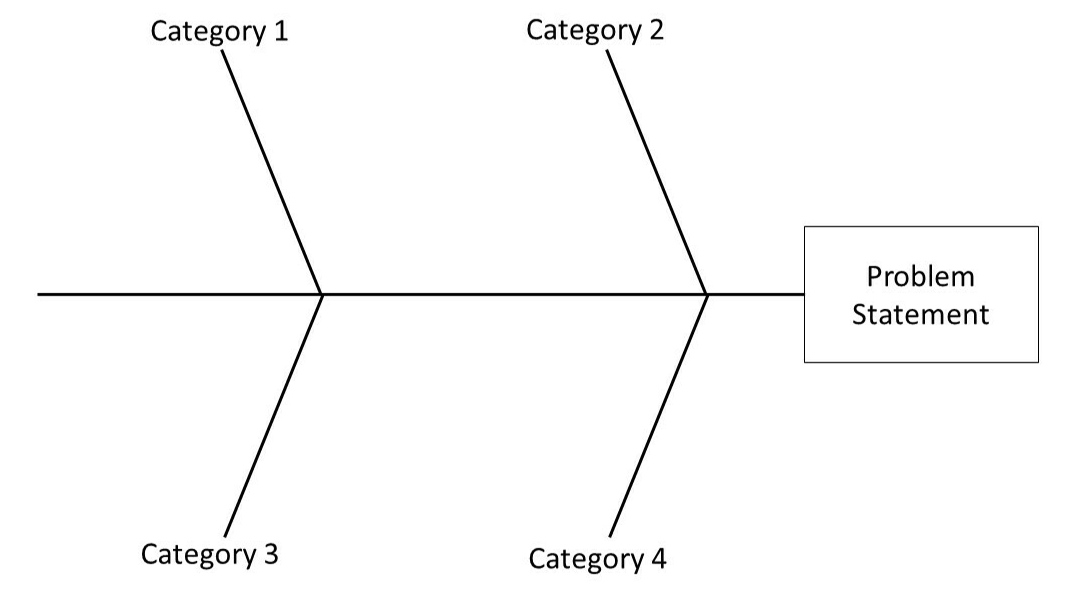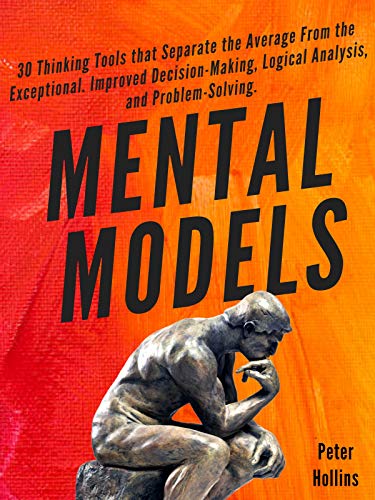This post is part of the 📖 Mental Models series.
Today, I am reading the 16th mental model Storytell in Reverse from Eye-Opening Problem-Solving chapter of the book Mental Models written by Author Peter Hollins.
Mental Models are like giving a treasure map to someone lost in the woods. They provide instant understanding, context, and most importantly, a path to the end destination. Now imagine having such a map for all problems and decisions in your life.
In this book Mental Models, author Peter Hollins discuss 30 mental models that billionaires/CEOs, Olympic athletes, and scientists use to think differently and avoid mistakes.
Battle information overwhelm, focus on what really matters, and make complex decisions with speed and confidence.
Yesterday, I finished reading the 15th mental model Separate Correlation From Causation.
Chapter #3: Eye-Opening Problem-Solving
Mental Model #16:
Storytell in Reverse
Use to determine causation more effectively.
A fishbone diagram is a method that allows you to identify multiple potential causes for a problem or an effect.
Being able to infer causes based on an observed effect is an integral aspect of the deduction, especially when it comes to problem-solving.
Fleshing out a list of all the possible causes of a problem simultaneously provides you with a blueprint of the specific factors you need to focus on to find viable solutions ultimately.
To make a fishbone diagram, first, write a problem statement or effect somewhere in the middle right portion of a whiteboard or any writing surface you’ve chosen.
Draw a box around it, then a horizontal line across the page that ends in that problem box. That box will serve as the “head” of the fishbone.
Next, draw the “bones” of the body by sketching widely spaced vertical lines that come out of the central horizontal line.
Draw bones above and below the mainline, slightly slanting away from the head of the fishbone.
These bones will be labelled with the different categories of the causes you come up with. It’s up to you to name the categories that apply to the problem you’re working on.

By systematically working backwards from the problem to the causes, you can identify specific aspects of your situation that you can then address accordingly.
A fishbone diagram is a tool that effectively focuses your efforts to solve the problem at its roots—or, in this case, at its bones.
Summary
- Storytell in Reverse. When it comes to causation, sometimes we need to get better at thinking in a specific manner. You have a visual aid in a fishbone diagram, which document causes of causes and so on. This is storytelling in reverse because you start with a conclusion, and you work backwards through sometimes ambiguous means.
That’s it for today. Tomorrow, we will read the 17th mental model SCAMPER It, use to methodically and creatively solve problems with force-fitting.
-
Address “Important”; Ignore “Urgent”
Identify and address important tasks, ignore urgent tasks. Delegate important but non-urgent task and delete not important and not urgent tasks.
-
Visualize All the Dominoes
Don’t stop your analysis once the most obvious situations are articulated. Consider as many long-term possible ramifications as you can. Think twice about what you’re doing, and it helps to eliminate rash decisions.
-
Make Reversible Decisions
If you want to make the best decision possible, you can go ahead and use reversible decisions to learn exactly what you need to know.
-
Seek “Satisfaction
We need far fewer things than we originally thought and that our desires are masquerading as needs. Use Seek “Satisfaction” to achieve your priorities and ignore what doesn’t matter by creating a default choice.
-
Stay Within 40-70%
Utilize this mental model by intentionally consuming less information and even overgeneralizing — this means not looking at the subtleties of your options.
-
Minimize Regret
Minimize Regret. Jeff Bezos developed what he calls the regret minimization framework. In it, he asks one to visualize themselves at age 80 and ask if they would regret making (or not making) a decision. This simplifies decisions by making them about one metric: regret.
-
Ignore “Black Swans”
A black swan event is an entirely unpredictable event that comes out of nowhere. Doing so skews all data and beliefs, and people start to take the black swan into account as a new normal. But these are just outliers that should be ignored.
-
Look for Equilibrium Points
This mental model is about noticing trends in progress.
When you first start something, you go from zero to one—that’s an infinite rate of progress. Then you go from one to two, two to three, and so on, and the rate of progress slows, and the returns start diminishing.
Somewhere around there is an equilibrium point that truly represents what the average mean will be. Don’t make the mistake of not waiting for it.
-
Wait for the Regression to the Mean
This mental model is the final mental model about seeing the whole picture in terms of information.
A change without reason for the change is not a change; it’s just a deviation. As such, it doesn’t represent what will continue to happen in the future.
A regression to the mean is when things settle back down and resume what they were doing before—this is representative of reality.
-
What Would Bayes Do (WWBD)?
Bayes’ Theorem is something that does allow us to conclude the future: based on probabilities and taking into account events that have already occurred. All you need are the rough probabilities of three elements to plug into the Bayes’ formula, and you will come to a more accurate conclusion than so-called experts. This is basic probabilistic thinking.
-
Do It Like Darwin
Darwin was not a genius, but he did have one trait that set him apart from others: his undying devotion to truth.
In doing so, he developed his golden rule (and our mental model) of giving equal weight and attention to arguments and opinions that opposed his own.
Instead of growing defensive when presented with something that opposed him, he grew critical and sceptical toward himself. This radical open-mindedness puts aside confirmation bias and ego.
-
Think With System 2
System 1 focuses on speed and efficiency of thought, while System 2 focuses on accuracy and depth of thought. System 2 is smart, while System 1 is dumb.
System 1 does more harm than good, but unfortunately, it is the one we default to because it is easier. Gain awareness of the difference between the two; acknowledge System 1, then jump immediately to System 2.
-
Peer Review Your Perspectives
Peer Review Your Perspectives. Many of the ways we fail at solving problems are related to our inability to look at other perspectives. We should be continually checking our perspectives through triangulation against those of others.
Thinking and solving in a vacuum will never work because if you didn’t experience it firsthand, it wouldn’t make sense to you.
-
Find Your Own Flaws
This mental model is about resisting the comforting allure of confirmation bias and attempting to scrutinize yourself before others ever get the chance.
Assume that you are wrong; this especially applies to interpersonal relationships. If you assume that you are at least 1% responsible for the conflict, your illusion of superiority and infallibility is broken, an important factor in social interaction.
-
Separate Correlation From Causation
Separate Correlation From Causation. They are entirely different things. Forcing a relationship where none exists will cause you to chase the wrong issue. In addition, you must separate proximate cause from root cause—the root cause is what we always want, and it can be reached through a series of questions.
-
Storytell in Reverse
When it comes to causation, sometimes we need to get better at thinking in a specific manner. You have a visual aid in a fishbone diagram, which document causes of causes and so on. This is storytelling in reverse because you start with a conclusion, and you work backwards through sometimes ambiguous means.
Author(s): Peter Hollins
Part 16 of 29 in the 📖 Mental Models book series.
Series Start | Mental Models - Day 15 | Mental Models - Day 17
